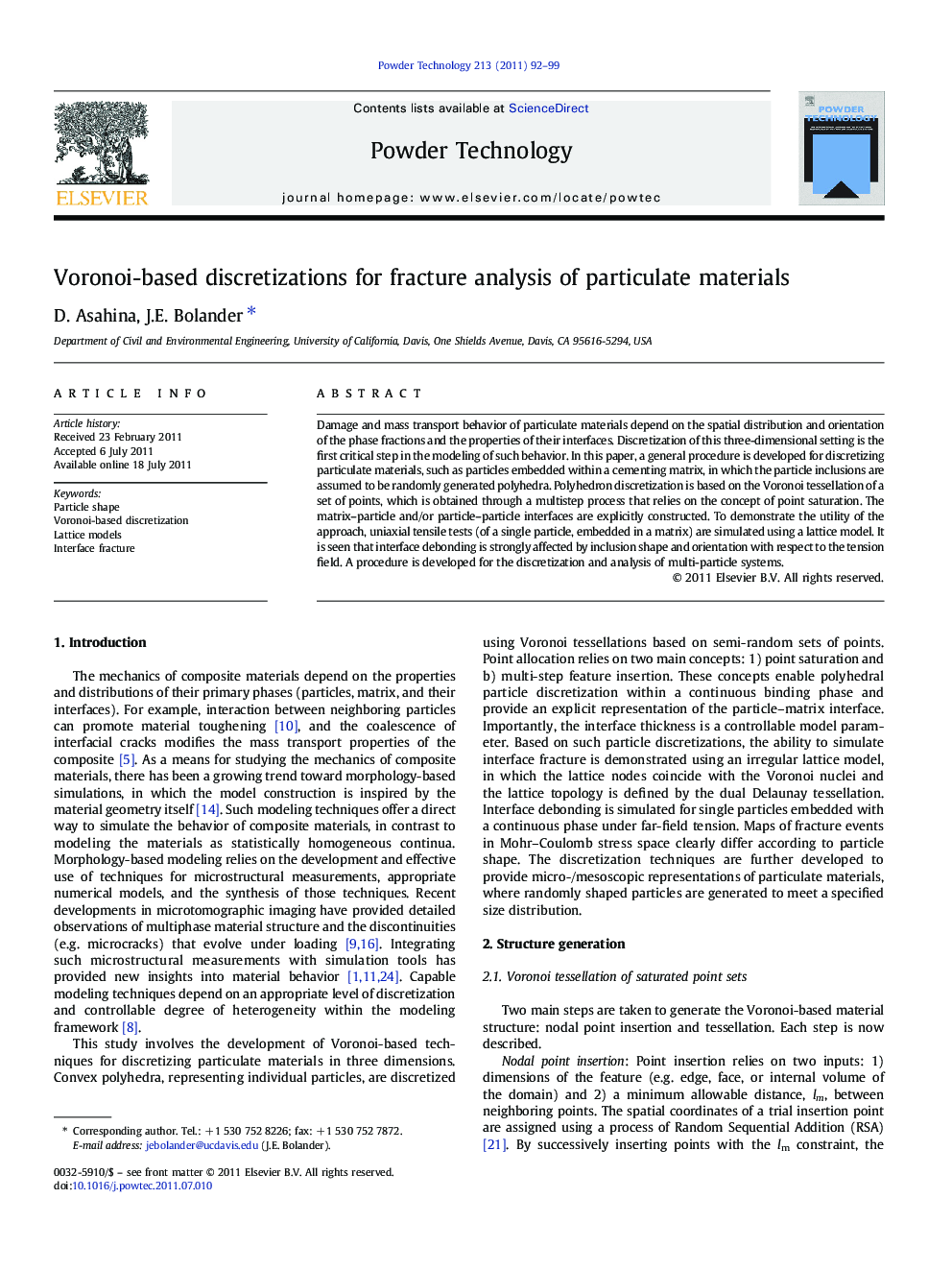| Article ID | Journal | Published Year | Pages | File Type |
|---|---|---|---|---|
| 237461 | Powder Technology | 2011 | 8 Pages |
Damage and mass transport behavior of particulate materials depend on the spatial distribution and orientation of the phase fractions and the properties of their interfaces. Discretization of this three-dimensional setting is the first critical step in the modeling of such behavior. In this paper, a general procedure is developed for discretizing particulate materials, such as particles embedded within a cementing matrix, in which the particle inclusions are assumed to be randomly generated polyhedra. Polyhedron discretization is based on the Voronoi tessellation of a set of points, which is obtained through a multistep process that relies on the concept of point saturation. The matrix–particle and/or particle–particle interfaces are explicitly constructed. To demonstrate the utility of the approach, uniaxial tensile tests (of a single particle, embedded in a matrix) are simulated using a lattice model. It is seen that interface debonding is strongly affected by inclusion shape and orientation with respect to the tension field. A procedure is developed for the discretization and analysis of multi-particle systems.
Graphical abstractWe discretize particulate materials using a two-stage process: 1) individual particles are first represented as Voronoi polyhedra; and 2) each polyhedron is then sub-discretized using a Voronoi tessellation of a quasi-random point set. The sequence of polyhedron feature construction is based on the concept of nodal point saturation. Explicit representation of matrix–particle and particle–particle interfaces facilitates the modeling of interface fracture. Lattice models of the tessellated point sets indicate that interface fracture depends on particle shape and orientation with respect to the loading direction.Figure optionsDownload full-size imageDownload as PowerPoint slideHighlights► Voronoi tessellations discretize geometrical features of particulate materials. ► Feature assembly is a serial process based on the concept of nodal point saturation. ► Utility of the discretization scheme is demonstrated using lattice models of fracture. ► Particle shape and orientation affect interface fracture behavior. ► Voronoi facets tile the fracture surface, which facilitates 3D damage visualization.
